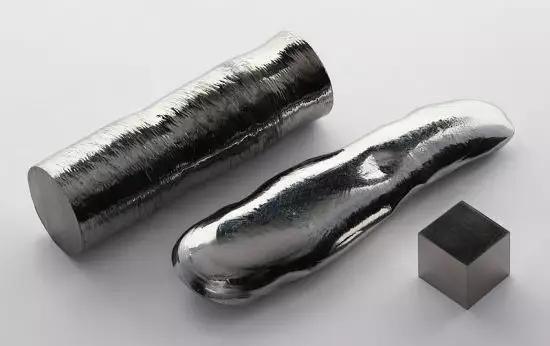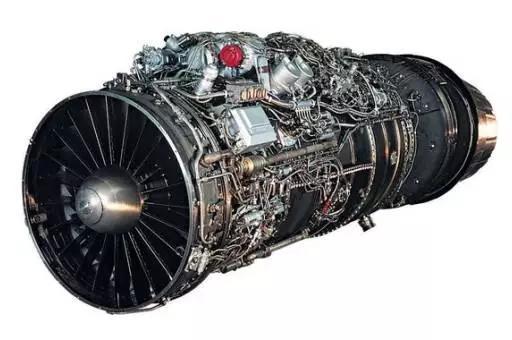Aeronautic engine R&D will not rely solely on “铼†and there will be a major breakthrough
At the beginning of September, the news that "China discovered the super metal" was aroused heated debate, saying that this rare metal could break through the bottleneck of aero engine development. What metal is "铼"? What is its relationship with aero engines? With “铼â€, China's aviation engine can have a qualitative leap? On September 11th, Wang Guangqiu, deputy dean of the Innovation Research Institute of Beijing Tianjiao Aviation Industry Investment Co., Ltd. and an expert of the National “Thousand Talents Programâ€, said in an interview with a reporter from the Science and Technology Daily that the development of aero-engine is a systematic project and will not rely solely on "There is a big breakthrough, which is only one of the factors that increase the performance of engine materials."
Rare, high melting point, hard to crack
Let's take a look at the past and present lives of the "Shu".
A metal element is one of high melting point metals. According to the authoritative professional book "The Handbook of Lanshi Chemistry", lanthanum is the second refractory metal after tungsten (3308 degrees Celsius) and has a melting point of 3180 degrees Celsius.
Baidu Encyclopedia inquiries, is still a truly rare element, the content in the earth's crust is only greater than the thorium and radium. In addition, it does not form a fixed mineral, usually associated with other metals, making it the last rare element found in nature.

In 1872, Mendeleev predicted based on the periodicity of the elements that there was an undiscovered “manganese-like†element with an atomic weight of 190 in nature. Until 1925, the German chemist Nordacke discovered this element in the yttrium-manganese ore by spectroscopy, taking the name of the Rhine as the name “铼â€.
According to the Handbook of Lange's Chemistry, in addition to its high melting point, lanthanum has a very high strength and good shape (commonly known as “strong and difficult to crackâ€), at high temperatures, rapid cooling and violent heating with strong mechanical impact and In the vibrating condition, “铼†also has excellent long-term working ability to resist deformation and cracking.
One of the elements to increase the performance of turbine blade alloy materials
Turbine blades are a key component of modern aeroengines. When the engine is operating, it is not only required to withstand high temperatures of approximately 1600 degrees, tens of atmospheres, and tens of thousands of revolutions per minute at the same time, but also to withstand the sustained effects of strong centrifugal forces.
“With such harsh working conditions, the materials used for the engine still need to be able to not be melted, deformed, or broken. The series of properties of the crucible make it one of the best choices.†said Wang Guangqiu, compared to the previous generation of aero engines. The directional crystallized common blades used in the new generation are generally single-crystal blades, which can increase the turbine combustion temperature around 200 degrees Celsius. With the addition of single crystal blades, it can enhance the performance of various aspects of the material.

The history of adding monocrystalline leaves has been around for about 20 years. However, due to the small amount of “铼†and the high cost of purification, the price is very high and it cannot be widely used in the development of aero-engines. According to the "Southern Wealth Network" quoted from the US Geological Survey report, the global proven reserves of plutonium is only about 2,500 tons, its price is similar to the price of platinum, one g of about two or three hundred dollars. According to statistics, in 2010, a mine in Shaanxi, China, reached 176 tons.
"Aero-engine has tens of thousands of components. Turbine blades are one of the key components. Even if you add cesium, you need to add alloys and how much. These are the topics that you want to seriously study." Wang Guangqiu said.
New generation engine total efficiency is the product of thermal efficiency and propulsion efficiency
“Aviation engine is a comprehensive system engineering. Its total efficiency is the product of thermal efficiency and propulsion efficiency.†Wang Guangqiu said that increasing the efficiency of aero engines comes from two parts, namely thermal efficiency and propulsion efficiency. The thermal efficiency of the latest generation of engines is currently about 50%, and the propulsion efficiency is about 80%.
Wang Guangqiu told reporters that taking the current state-of-the-art Boeing 787 and Airbus 350 as examples, its overall engine efficiency is slightly higher than 40%.

“Using single-crystal turbine blades containing yttrium elements to increase the gas temperature and increase thermal efficiency is one of the ways to increase the overall engine efficiency. On the other hand, today’s aero-engines also aim to increase overall efficiency by increasing propulsion efficiency.†Say.
How much each of the two efficiencies is, is also a difficulty in the development of aero engines. "By increasing the temperature of the gas, the emission of nitrogen oxides is also correspondingly increased. When the temperature is high and the air flow rate is increased, the noise is also increased." Wang Guangqiu said.
Aeroengine operating principles show that an aeroengine includes a low pressure compressor, a high pressure compressor, a high pressure turbine, and a low pressure turbine, with an annular combustion chamber in between. “These structures have different working temperatures and pressure environments. The materials used are also different. The metal crucibles are mainly for the main pressure turbine blades.†Wang Guangqiu believes that due to the limitations of physical conditions, the thermal efficiency is increased by increasing the temperature. Difficulties. Modern aeroengines mainly improve the efficiency of propulsion by increasing the duct ratio, thereby achieving the goal of improving the overall engine efficiency and achieving energy conservation and emission reduction.
Anti-slip Flooring Rolls are a crucial bathroom accessory that offers peace of mind and practicality. Whether you're in the shower, standing, or even for cleaning, these anti-skid flooring pads ensure your feet stay put and prevent you from slipping or sliding.
The durable PVC material used in anti-skid pads means they have a long lifespan, are odorless, non-toxic, and safe to use, making them a great choice for both residential and commercial use.
The flat appearance of anti-skid pads makes them a great choice for any bathroom space. They can be easily coordinated with other bathroom accessories and accents, and can even enhance the overall look of a space.
Anti-slip Flooring Rolls are versatile, allowing you to use them for standing, showering, and even for cleaning. Simply wipe clean with a clean, dry cloth and you're ready to go. No need to worry about dirt or scratches. These anti-slip Flooring Rolls can even be machine-washed in a few minutes, ensuring that they'll always be ready for action.
Finally, anti-slip Flooring Rolls are a luxurious choice that will enhance any bathroom space. They come in a variety of colors and styles to match any bathroom decor, and they're sure to add a touch of class and style to any space.
In conclusion, Anti-slip Flooring Rolls are a crucial bathroom accessory that offers peace of mind and practicality. They have a long lifespan, are odorless, non-toxic, and safe to use, making them a great choice for both residential and commercial use. Whether you're looking to save space, improve the look of your bathroom, or simply want to make your bathroom more comfortable, Anti-slip Flooring Rolls are the perfect choice.
Anti Slip Flooring Roll,PVC Mat Rolls,Anti Slip Mats Roll,Plastic Mat Roll
Jiangyin Yining E-Commerce Co., Ltd , https://www.pvcmatyining.com